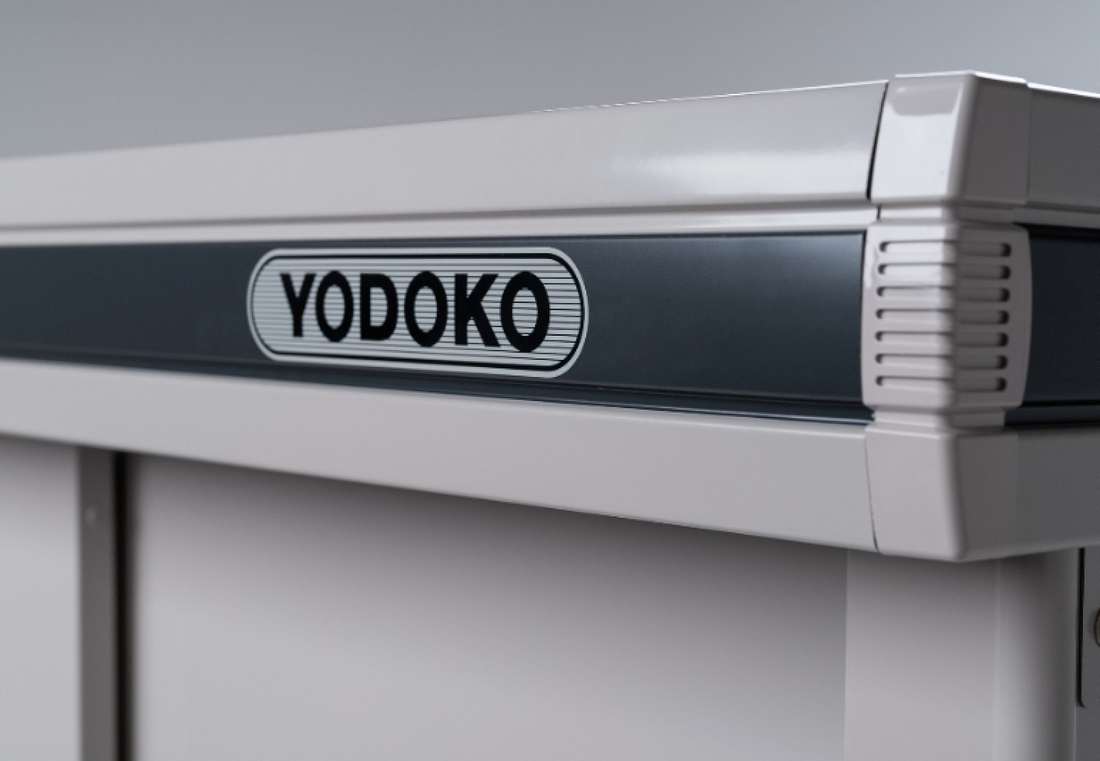
How to Maintain an Outdoor Cabinet (Without Actually Maintaining It)
Share
You want your outdoor space to be clean and organized—but the last thing you want is a storage cabinet that becomes another thing to clean, repaint, or repair. The solution? Choose low-maintenance outdoor cabinets that are built to survive the elements without constant upkeep.
This guide shows how to choose the right cabinet and install it in a way that keeps it looking great for years—without you lifting a finger (well, maybe just once).
1. Choose the Right Materials Up Front
The best “maintenance-free” cabinet is the one that’s designed to handle weather extremes from day one. Skip wood and plastic and look for:
- Galvanized or powder-coated steel — resists rust, peeling, and UV damage
- Sealed construction — keeps out moisture, dirt, and pests
- Stainless or zinc-coated hardware — for hinges and handles that don’t seize up
- Fade-resistant coatings — keeps your cabinet looking new even after years in the sun
These materials don’t require painting, sealing, or sanding—just install and walk away.

2. Elevate Your Cabinet Off the Ground
One of the biggest threats to outdoor storage? Moisture from below. Standing water, mud, and ground condensation can lead to premature rust, mold, or corrosion. To solve this:
- Use cabinets with built-in legs or install on concrete pavers
- Choose designs with angled or vented bases to promote airflow
- Anchor the unit to avoid tipping in strong wind or flooding conditions
Bonus: elevated cabinets are easier to sweep and hose off underneath—great for keeping bugs away too.

3. Pick a Modular, Replaceable System
Even the best outdoor gear takes a beating over time. Modular systems help you future-proof your setup:
- Replace a door or panel without tossing the whole cabinet
- Add interior shelves or hooks without drilling
- Expand your setup laterally or vertically as your storage needs grow
This approach keeps maintenance costs and effort low. Think smart now to avoid problems later.
4. Design for Cleanliness, Not Just Storage
It’s not just about what goes inside—it’s how your cabinet handles dirt, leaves, and pests. Look for:
- Tightly sealed doors and minimal seams to block dust
- Flush exterior surfaces that don’t trap grime or spider webs
- Slightly sloped roofs that shed rainwater and debris
- Optional locking systems to keep rodents and raccoons out
Design matters. The fewer nooks and gaps, the less cleaning you’ll ever need to do.
5. Secure It and Forget It
Low-maintenance doesn’t mean low-security. Protect your tools with these must-have features:
- Rust-proof locks that work even in wet climates
- Hidden latches or recessed handles to discourage tampering
- Anchoring points to bolt the cabinet down (prevent theft and wind tipping)
- Drainage-ready platforms for storm-prone areas
When your cabinet is secure, you can trust it to function reliably without hands-on attention.
Quick Comparison: Low-Maintenance Cabinet Features
|
Feature |
Why It Helps |
|
Galvanized steel |
Rust-proof, fade-resistant |
|
Raised base |
Prevents ground moisture damage |
|
UV-protected finish |
No fading or cracking from sun |
|
Modular components |
Easy to fix or upgrade |
|
Sealed doors & hardware |
Keeps out debris, bugs, and water |
FAQs
Q1: What’s the lowest-maintenance cabinet material?
Galvanized or powder-coated steel offers the best resistance to rust, UV, and wear—no sanding, sealing, or painting needed.
Q2: How often should I clean an outdoor cabinet?
If properly sealed and elevated, a quick wipe-down every 3–6 months is enough. In dry climates, even less.
Q3: Can I install a low-maintenance cabinet in a humid or coastal area?
Yes. Just be sure it's made from anti-corrosion materials and elevated off soil or grass to avoid trapped moisture.

